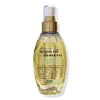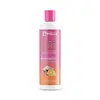What's inside
What's inside
 Key Ingredients
Key Ingredients

No key ingredients
 Benefits
Benefits

 Concerns
Concerns

 Ingredients Side-by-side
Ingredients Side-by-side

Water
Skin ConditioningCocos Nucifera Oil
MaskingSorbitol
HumectantIsopropyl Myristate
EmollientCetearyl Alcohol
EmollientSodium Stearyl Sulfate
CleansingCyclopentasiloxane
EmollientGlyceryl Stearate Se
EmulsifyingOlea Europaea Fruit Oil
MaskingStearic Acid
CleansingCarthamus Tinctorius Seed Oil
MaskingRicinus Communis Seed Oil
MaskingOryza Sativa Bran Water
MaskingBrassica Campestris Seed Oil
Skin ConditioningCitrus Junos Peel Extract
Skin ConditioningPolyglyceryl-3 Diisostearate
EmulsifyingPhenoxyethanol
PreservativeBenzoic Acid
MaskingEthylhexylglycerin
Skin ConditioningGlycereth-2 Cocoate
EmulsifyingDiheptyl Succinate
EmollientCapryloyl Glycerin/Sebacic Acid Copolymer
Skin ConditioningXanthan Gum
EmulsifyingAminomethyl Propanol
BufferingBHT
AntioxidantDisodium EDTA
Hydrolyzed Milk Protein
Skin ConditioningParfum
MaskingWater, Cocos Nucifera Oil, Sorbitol, Isopropyl Myristate, Cetearyl Alcohol, Sodium Stearyl Sulfate, Cyclopentasiloxane, Glyceryl Stearate Se, Olea Europaea Fruit Oil, Stearic Acid, Carthamus Tinctorius Seed Oil, Ricinus Communis Seed Oil, Oryza Sativa Bran Water, Brassica Campestris Seed Oil, Citrus Junos Peel Extract, Polyglyceryl-3 Diisostearate, Phenoxyethanol, Benzoic Acid, Ethylhexylglycerin, Glycereth-2 Cocoate, Diheptyl Succinate, Capryloyl Glycerin/Sebacic Acid Copolymer, Xanthan Gum, Aminomethyl Propanol, BHT, Disodium EDTA, Hydrolyzed Milk Protein, Parfum
 Reviews
Reviews

Ingredients Explained
These ingredients are found in both products.
Ingredients higher up in an ingredient list are typically present in a larger amount.
Parfum is a catch-all term for an ingredient or more that is used to give a scent to products.
Also called "fragrance", this ingredient can be a blend of hundreds of chemicals or plant oils. This means every product with "fragrance" or "parfum" in the ingredients list is a different mixture.
For instance, Habanolide is a proprietary trade name for a specific aroma chemical. When used as a fragrance ingredient in cosmetics, most aroma chemicals fall under the broad labeling category of “FRAGRANCE” or “PARFUM” according to EU and US regulations.
The term 'parfum' or 'fragrance' is not regulated in many countries. In many cases, it is up to the brand to define this term.
For instance, many brands choose to label themselves as "fragrance-free" because they are not using synthetic fragrances. However, their products may still contain ingredients such as essential oils that are considered a fragrance by INCI standards.
One example is Calendula flower extract. Calendula is an essential oil that still imparts a scent or 'fragrance'.
Depending on the blend, the ingredients in the mixture can cause allergies and sensitivities on the skin. Some ingredients that are known EU allergens include linalool and citronellol.
Parfum can also be used to mask or cover an unpleasant scent.
The bottom line is: not all fragrances/parfum/ingredients are created equally. If you are worried about fragrances, we recommend taking a closer look at an ingredient. And of course, we always recommend speaking with a professional.
Learn more about Parfum